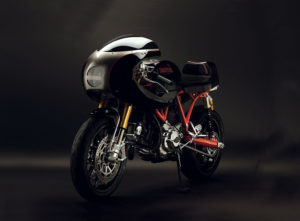This special was born from an idea of the owner of a Sport 1000 of 2005 who, wanting to customize his bike, turned to two specialists in the aftermarket sector.
For the accessory part, the name taken as a reference was that ofthe Cafe Twin workshop,specialized in Ducati-themed customizations based in Rome, while the aluminum tank and single-seater tail come from Tecknorace and have been custom-made.
This company is in fact able to shape aluminum at will for the construction of special parts and is based in the heart of Italian motorsport, namely in Maranello (MO).
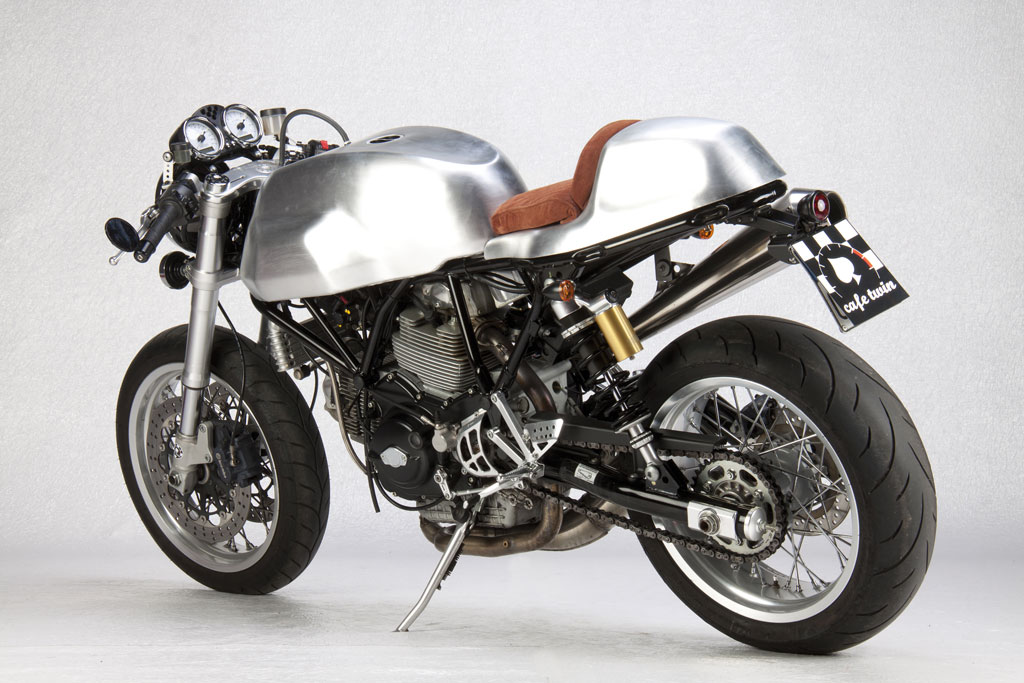
The tank of this Sport 1000,for example, was
The tank took more than 15 days of work and was done without a model, thanks to the expert eye of the binge!
Obtained from the aluminum tank are instead the refueling cap, the flange for the petrol pump and the related fixing bushings.
Per il codino monoposto, il proprietario della moto ha fornito un esemplare in vetroresina che, dopo esser stato adattato alle forme della Sport 1000, è stato riprodotto anch’esso in alluminio, sempre rigorosamente a mano, con l’aggiunta di una
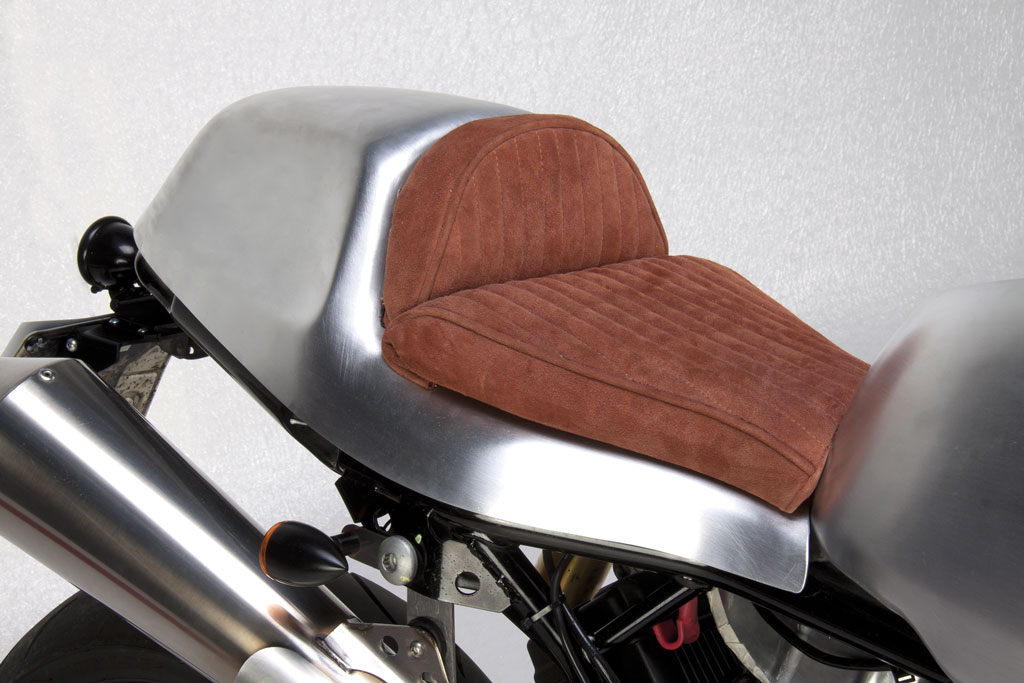
Both the tank and the codon are therefore ” plug and play “anddo not require structural modification to be installed on the standard bike.
In addition, the specimen in question also underwent the removal of the large fender and the rear optical group, replaced by a decidedly leaner aluminum body capacity and a small circular headlight, with a classic look but equipped with LEDs.
The original front fender does not even appear, but it has not been replaced, but simply eliminated in favor of maximum aesthetic cleanliness of the front.
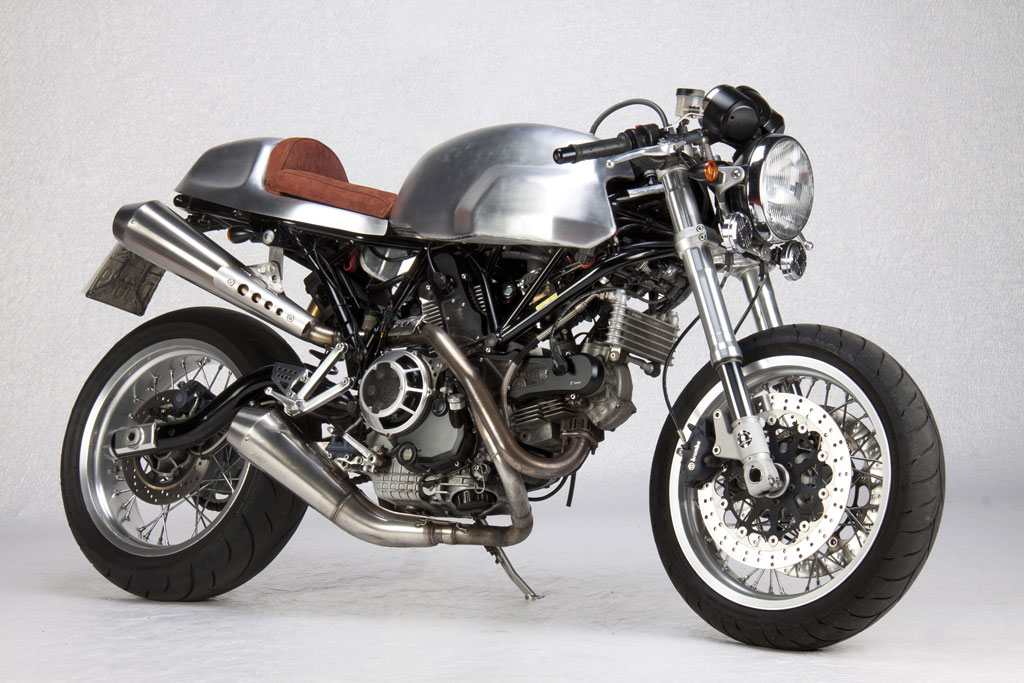
The direction indicators ,both front and rear, gave way to others in black anodized aluminum called “bullet” for the particular bullet shape.
Among the various accessories that embellish the engine, there is also a small selection of items taken from
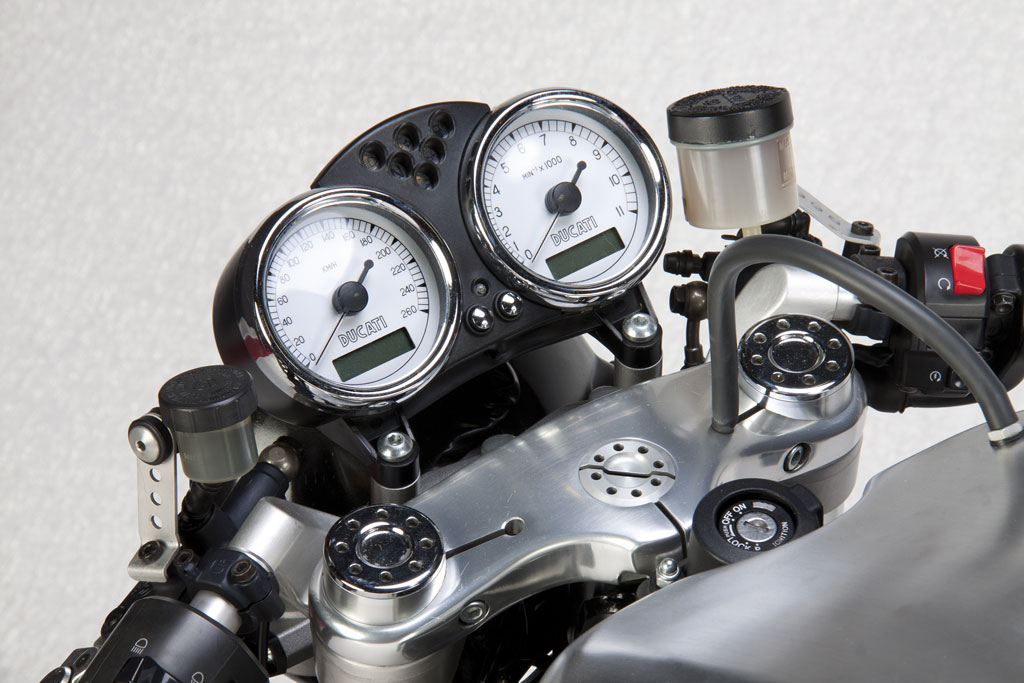
Finally, here are the classic interventions on the hardware of the twin-cylinder, such as
The “recipe” for suction and electronics was found in the form of a kit developed by an Australian company, Wasp Works,while the rest remained more or less standard.
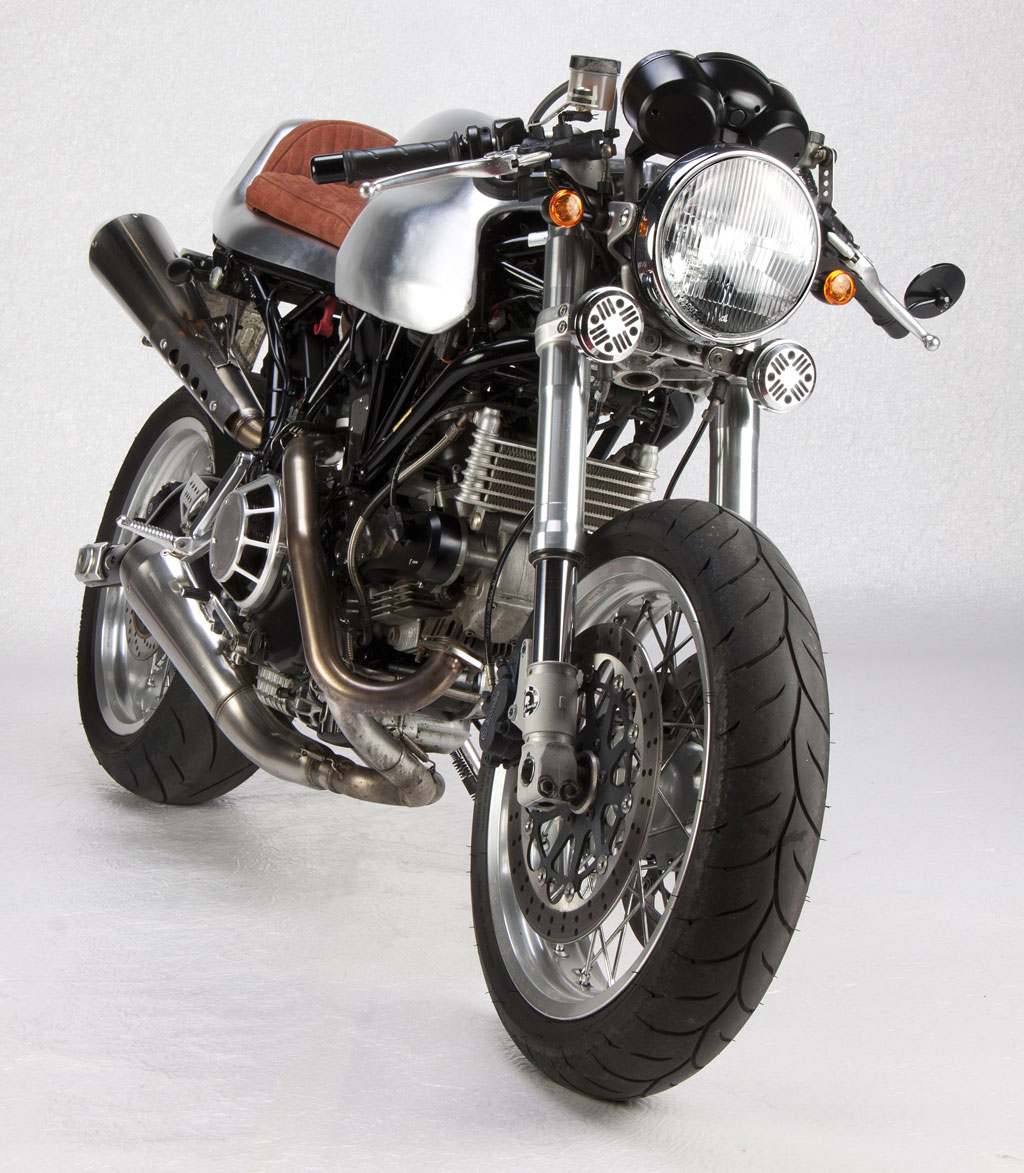
The butterfly bodies, therefore, are still the 45 mm ones provided for by the original Magneti Marelli electronic injection system, just as the reaming and running measurements of 94 x 71.5 mm have not been “touched”, leaving the displacement at 992 cc as per the traffic book.
According to the stated data, even the absolute performance has not changed much, in favor of an improvement especially in terms of delivery, therefore the maximum power should be around 92 Hp and the torque of about 9.3 Kgm.
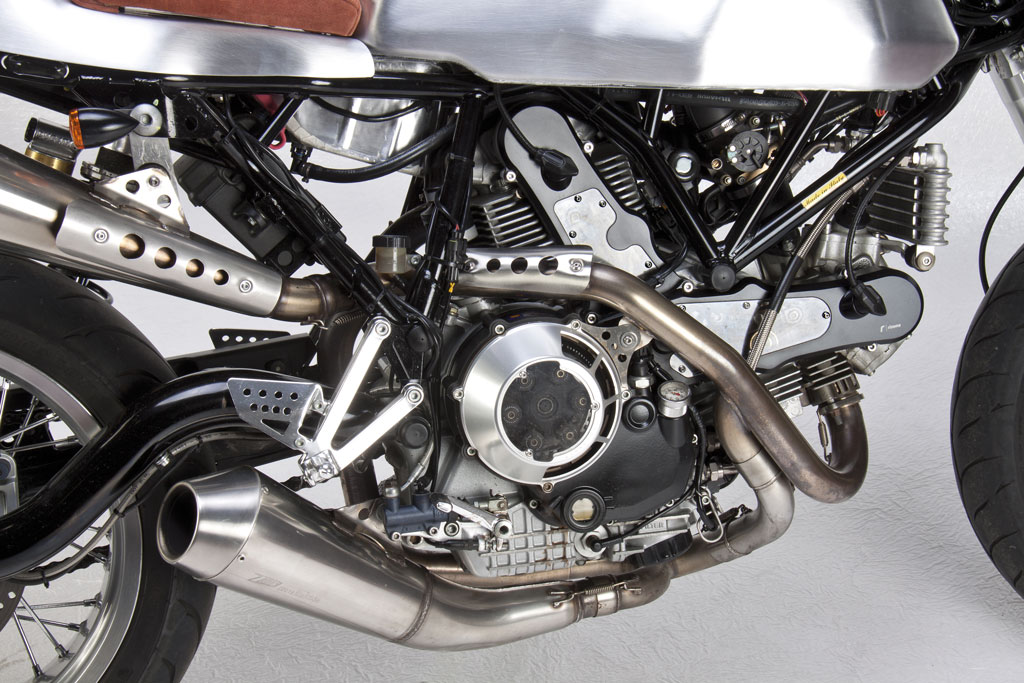
Similarly, the bike still
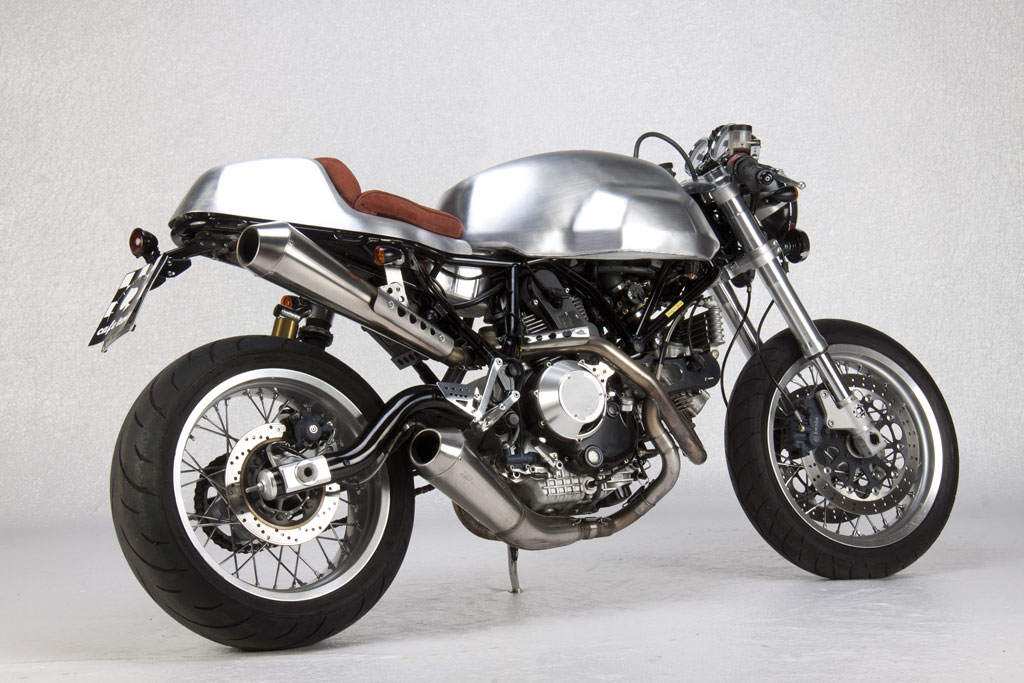
The tyres, which, among other things, take advantage of the original spokes rims and therefore need an inner tube, provide for the classic measurements with the 120/70 front and the 180/55 rear, both 17″.
Fine details, sober livery and nothing superfluous: this is the recipe for a real cafe racer style special.
The result is a bike that, beyond its pleasant aesthetic appearance in cafe racer style,is also appreciated for a certain reduction in weight compared to the original model, quantifiable in about 4 kg, for a total of 175 kg dry: the merit is of those aluminum components that replaced the similar standard elements, as well as the minimalism with which the set-up was taken care of, made of a few frills and a lot of substance, as he once used to do on motorcycles parked in front of the Ace Cafe in London and which is part of a certain philosophy of understanding motorcycles and motorcycling.
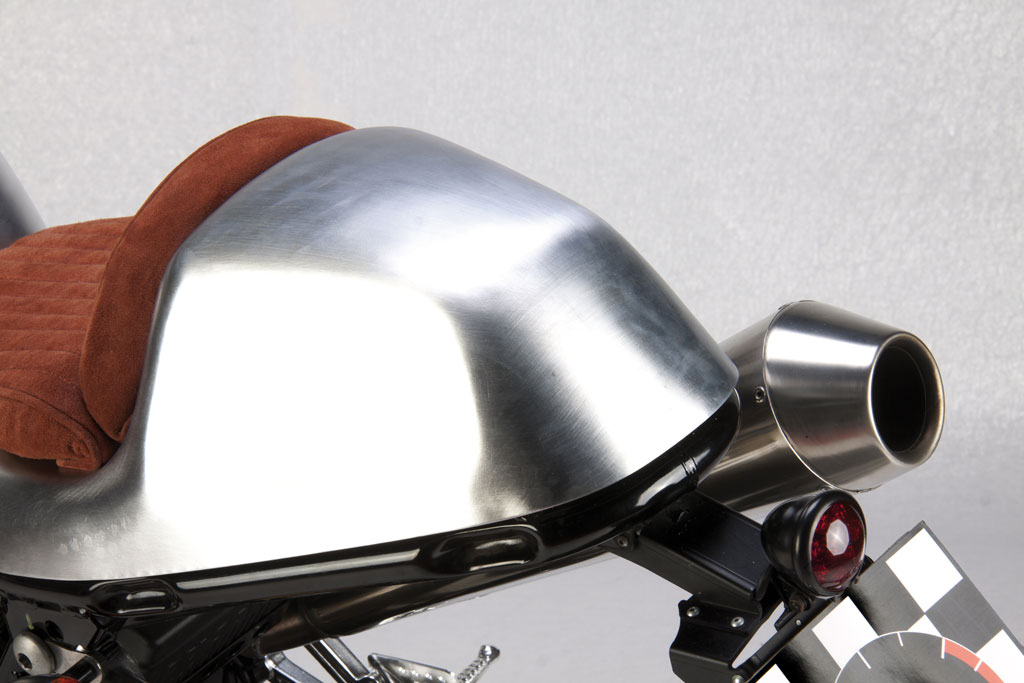
Tecknorace’s achievements,in fact, are true to these ideals and never give up a good deal of “handmade” in order to stand out, even if this involves more time and costs.
Photos by Paolo Grana
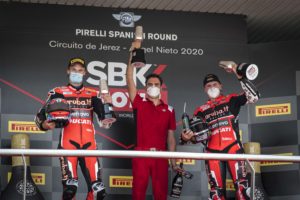
SBK a Jerez: avanti tutta!
A Jerez de la Frontera, seconda tappa del campionato SBK, si ri-accende lo spettacolo con Ducati protagonista. Doppietta di Redding e secondo posto in gara 2 per Davies.
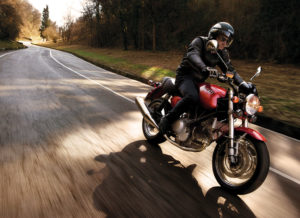
Ducati GT 1000: monografia
Nel 2006 Ducati presenta la GT 1000, con l’obiettivo – non del tutto raggiunto – di riproporre al pubblico lo stile e la classe della mitica 750 GT.


